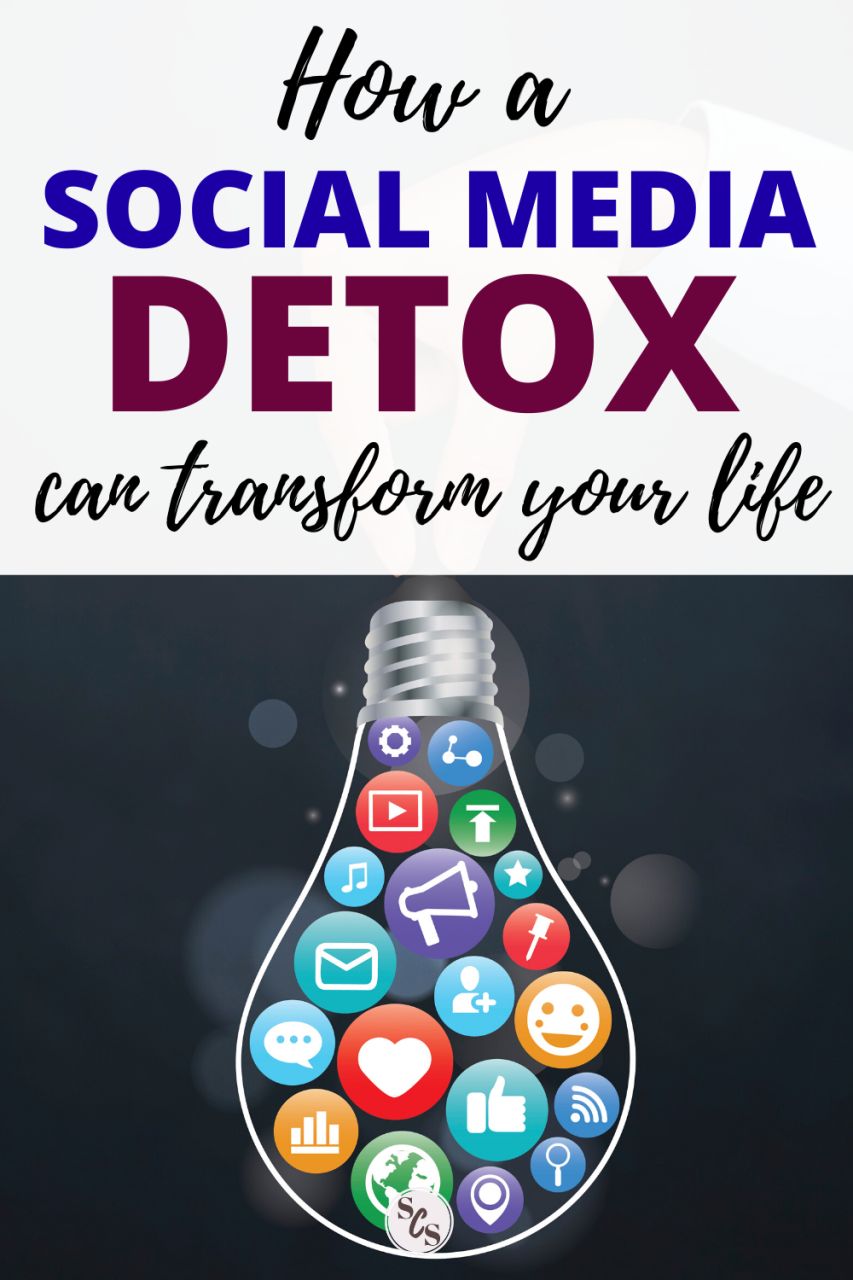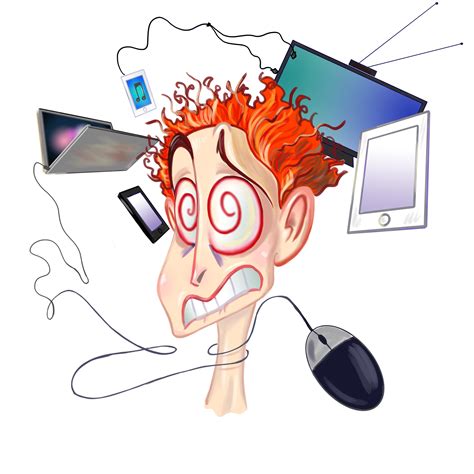
Reclaim Focus: Digital Detox for Health
In an era defined by constant connectivity, our lives are inextricably intertwined with digital devices. From smartphones and social media to streaming services and endless news feeds, the digital world offers unparalleled convenience and access. Yet, this relentless immersion comes at a cost, increasingly impacting our mental well-being, physical health, and even our relationships. The concept of a digital detox has emerged not as a rejection of technology, but as a crucial strategy for regaining control, fostering mindfulness, and ultimately improving overall health. For individuals grappling with digital overload, understanding and implementing effective digital detox for health practices is vital. This growing awareness also makes “digital detox” a highly relevant and trending search topic, offering significant potential for content creators to drive high Google AdSense revenue through informative, actionable, and engaging content. This comprehensive guide will delve deep into the pervasive influence of digital technology, explore the compelling benefits of disconnecting, and arm you with practical strategies to embark on your own journey toward digital well-being.
The Pervasive Digital Landscape: A Double-Edged Sword
We live in a hyper-connected world where a significant portion of our daily lives revolves around screens. The average person spends hours each day on their phone, checking social media, Browse the web, or consuming digital content. This constant digital engagement offers undeniable benefits, including instant communication, access to vast amounts of information, entertainment, and professional opportunities. However, the dark side of this ubiquity is becoming increasingly apparent.
The relentless demands of the digital world can lead to:
- Information Overload: A constant barrage of news, notifications, and updates that overwhelms our cognitive capacity.
- Reduced Attention Span: The need for instant gratification fostered by quick content consumption can erode our ability to focus on complex tasks.
- Sleep Disruption: The blue light emitted from screens suppresses melatonin production, interfering with our natural sleep cycles.
- Increased Anxiety and Depression: Social media’s curated realities can fuel feelings of inadequacy, FOMO (Fear Of Missing Out), and comparison, contributing to mental health struggles.
- Physical Ailments: Eye strain, neck pain (“tech neck”), poor posture, and sedentary lifestyles are common byproducts of excessive screen time.
- Strained Relationships: “Phubbing” (phone snubbing) and a preference for virtual interactions over real-life connections can erode interpersonal bonds.
- Loss of Presence: Constantly checking devices pulls us away from the present moment, diminishing our ability to fully experience and appreciate our surroundings and interactions.
Recognizing these profound impacts is the first step toward understanding why a conscious effort to disconnect, a digital detox, has become a necessary wellness practice, not just a fleeting trend.
The Compelling Benefits of a Digital Detox
Stepping away from constant digital engagement offers a myriad of profound benefits that can significantly enhance various facets of your health and well-being. A digital detox for health is an investment in your mental clarity, emotional resilience, and physical vitality.
A. Improved Mental Clarity and Focus
One of the most immediate benefits of reducing digital intake is a noticeable improvement in cognitive function.
- Enhanced Concentration: Without constant notifications and the urge to multitask across devices, your brain can retrain itself to focus deeply on single tasks, improving productivity and the quality of your work or studies.
- Reduced Mental Clutter: The endless stream of information, news, and social updates can overwhelm the brain. Disconnecting provides a much-needed mental break, allowing for clearer thought and less cognitive fatigue.
- Boosted Creativity: When your mind isn’t constantly processing external stimuli, it creates space for introspection, imagination, and novel ideas to emerge. Many creative breakthroughs happen during periods of rest or quiet reflection, away from screens.
- Better Problem-Solving: A less distracted mind is better equipped to analyze complex problems, devise solutions, and engage in critical thinking, rather than defaulting to quick, superficial answers.
B. Enhanced Emotional Well-being and Reduced Stress
The digital world, particularly social media, can be a breeding ground for comparison, anxiety, and feelings of inadequacy. Detoxing directly addresses these emotional challenges.
- Lowered Anxiety and Stress Levels: Breaking the habit of constantly checking for updates or comparing your life to others’ curated online personas significantly reduces stress and feelings of inadequacy. The pressure to “keep up” dissipates.
- Increased Self-Esteem and Body Image: Stepping away from the idealized, often unrealistic, portrayals on social media allows for a healthier self-perception, reducing body image issues and fostering greater self-acceptance.
- Greater Self-Awareness: Without external distractions, you’re more attuned to your own thoughts, emotions, and physical sensations, leading to a deeper understanding of your inner landscape.
- Reduced FOMO (Fear of Missing Out): When you consciously choose to disconnect, the anxiety surrounding what others are doing or experiencing online naturally diminishes, allowing you to appreciate your own reality more fully.
C. Superior Sleep Quality
The detrimental effects of screen time on sleep are well-documented. A digital detox directly tackles these issues.
- Improved Melatonin Production: The blue light emitted from screens (especially from smartphones, tablets, and computers) before bed suppresses the production of melatonin, the hormone that regulates sleep. Disconnecting several hours before sleep allows natural melatonin production to commence, leading to easier sleep onset and better sleep quality.
- Deeper and More Restful Sleep: Reducing digital stimulation before bed helps the mind wind down, transitioning from a state of alertness to one conducive to deep, restorative sleep. This can lead to feeling more refreshed upon waking.
- Regular Sleep Cycles: Consistent disconnection from devices, especially in the evenings, helps to re-establish and regulate your natural circadian rhythm, leading to more consistent and healthy sleep patterns.
D. Stronger Interpersonal Relationships
Technology, ironically, can create barriers in real-life interactions. A digital detox helps mend and strengthen these bonds.
- More Present Interactions: Without the constant pull to check your phone, you are fully present in conversations, making eye contact, listening actively, and truly connecting with others. This enhances the quality of your relationships.
- Improved Communication Skills: Relying less on digital communication forces you to engage in face-to-face conversations, improving your verbal and non-verbal communication abilities.
- Deeper Connections: When you’re truly present with loved ones, shared experiences become richer and more meaningful, fostering stronger emotional bonds and reducing feelings of isolation.
- Setting Healthy Boundaries: A detox helps you model and enforce healthy boundaries around technology, encouraging others in your life to do the same, leading to more respectful and engaging interactions.
E. Enhanced Physical Well-being
While often associated with mental health, a digital detox also yields tangible physical benefits.
- Reduced Eye Strain and Headaches: Constant staring at screens can cause digital eye strain, leading to dry eyes, blurred vision, and headaches. Taking breaks from screens significantly alleviates these symptoms.
- Improved Posture and Reduced Pain: Less time hunched over devices means improved posture, reducing “tech neck,” back pain, and shoulder tension.
- Increased Physical Activity: When you’re not glued to a screen, you’re more likely to engage in physical activities, whether it’s going for a walk, pursuing a hobby, or playing sports, leading to a more active lifestyle.
- Better Eating Habits: Mindless scrolling while eating can lead to overconsumption. Disconnecting allows for mindful eating, where you pay attention to hunger cues and the experience of food, often leading to healthier choices.
Practical Strategies for a Successful Digital Detox

Embarking on a digital detox for health doesn’t necessarily mean abandoning technology forever. For most, it’s about creating healthier boundaries and more intentional usage. Here’s how to implement effective strategies:
A. Start Small: Gradual Disconnection
Don’t aim for an overnight transformation. Gradual changes are more sustainable.
- Designate Tech-Free Zones: Establish areas in your home where devices are prohibited, such as the bedroom, dining table, or bathroom. This creates sacred spaces for presence.
- Implement Tech-Free Times: Set specific hours each day when you put your devices away. This could be the first hour after waking up, the last hour before bed, or during mealtimes.
- Set App Limits: Utilize features on your smartphone (e.g., Screen Time on iOS, Digital Wellbeing on Android) to set daily time limits for addictive apps like social media or games.
- Schedule Digital Breaks: If your work requires screen time, schedule short, regular breaks (e.g., 5-10 minutes every hour) to step away from the screen, stretch, or look out a window.
B. Optimize Your Devices and Digital Habits
Make your devices work for you, not against you, by adjusting settings and adopting mindful habits.
- Turn Off Notifications: Disable all non-essential notifications. For many apps, turning off sound and visual alerts can dramatically reduce urges to check your phone. Batch check emails and messages periodically.
- Declutter Your Digital Space: Delete unused apps, unsubscribe from unnecessary email lists, and unfollow accounts that trigger negative emotions or excessive scrolling. Curate your digital environment to be a positive space.
- Utilize Grayscale Mode: Temporarily switching your phone screen to grayscale can make it less appealing and reduce the desire to constantly check it, as colors are less stimulating.
- Charge Devices Outside the Bedroom: Keep your phone, tablet, and laptop out of the bedroom to remove the temptation for late-night scrolling and improve sleep hygiene. Invest in an old-fashioned alarm clock.
- Reconsider Social Media: Evaluate which platforms genuinely add value to your life. Consider deactivating or deleting accounts that contribute to anxiety, comparison, or excessive time consumption. Use social media intentionally, not habitually.
C. Re-Engage with the Analog World
Fill the void left by digital disconnection with enriching, real-world activities.
- Rediscover Hobbies: Engage in activities you once loved but perhaps neglected due to screen time—reading physical books, playing an instrument, painting, knitting, gardening, or cooking.
- Spend Time in Nature: Connecting with nature has profound benefits for mental and physical health. Go for walks, hikes, or simply sit outdoors and observe your surroundings without your phone.
- Prioritize Face-to-Face Interactions: Make an effort to schedule coffee dates, dinners, or outings with friends and family. Practice being fully present during these interactions.
- Journaling and Reflection: Use the newfound quiet time for introspection. Journaling can help process thoughts, manage emotions, and increase self-awareness.
- Learn a New Skill: Take a class (in-person or online, but ensure a balance), learn a language, or try a new craft that engages your mind offline.
D. Communicate Your Intentions
Inform your friends, family, and colleagues about your digital detox plans to manage expectations and gain support.
- Set Expectations: Let people know you might be less responsive during certain hours or days. This helps alleviate pressure and avoids misunderstandings.
- Designate an Emergency Contact: For essential communications, provide an alternative contact method or specify a time when you will check messages.
- Lead by Example: Your efforts might inspire others in your social or professional circles to consider their own digital habits.
E. Plan for Longer Detox Periods (Optional)
Once you’ve mastered daily digital boundaries, consider extending your detox periods for deeper rejuvenation.
- Weekend Detox: Dedicate an entire weekend to being largely screen-free, especially from non-essential digital activities.
- Vacation Detox: Use a vacation as an opportunity for a more extended digital break, truly immersing yourself in the experience.
- Digital “Sabbatical”: For the truly committed, a longer period (e.g., a week or a month) without non-essential digital devices can be profoundly transformative, but requires careful planning and communication.
The Science Behind Digital Overload and Detox

The impact of constant digital immersion and the benefits of a detox are not merely anecdotal; they are increasingly backed by neuroscientific and psychological research.
A. Dopamine and the Reward Loop
Social media and apps are designed to be addictive, leveraging our brain’s dopamine reward system. Notifications, likes, and new content trigger dopamine release, creating a compulsion to check repeatedly, similar to gambling. A digital detox breaks this artificial reward loop, allowing the brain’s natural reward system to recalibrate and find pleasure in real-world experiences.
B. The Impact of Blue Light
The blue light emitted from screens, particularly LED devices, interferes with the body’s natural circadian rhythm. Blue light at night signals to the brain that it’s daytime, suppressing melatonin production, which is essential for initiating and maintaining sleep. This disruption can lead to insomnia, poor sleep quality, and long-term health issues. Detoxing from screens before bed is a direct intervention.
C. Cortisol and Chronic Stress
The constant flow of information, perceived social pressures, and the expectation of immediate responses from digital communication can elevate cortisol levels, the body’s primary stress hormone. Chronic elevated cortisol can lead to systemic inflammation, anxiety, weight gain, and impaired immune function. A digital detox helps to lower these chronic stress responses.
D. Neuroplasticity and Attention
Our brains are incredibly adaptable (neuroplastic). Constant digital multitasking and rapid content switching train our brains for superficial attention and reactivity, rather than deep focus and sustained concentration. A digital detox, especially one that incorporates mindfulness and focused analog activities, can help retrain the brain for deeper engagement and sustained attention.
E. Social Comparison Theory
Social media platforms, in particular, exacerbate social comparison. Users primarily post idealized versions of their lives, leading others to compare their own reality unfavorably. This constant comparison is linked to increased feelings of anxiety, depression, envy, and lower self-esteem. Disconnecting from these platforms removes this significant psychological trigger.
Digital Detox in Different Contexts
The application of a digital detox for health can vary depending on one’s life circumstances and professional demands.
A. For Students
Students face immense pressure to be online for assignments, research, and social connection. A detox can improve academic performance.
- Scheduled Study Blocks: Use apps that block distracting websites during study periods.
- Physical Study Spaces: Work in libraries or quiet rooms away from personal devices.
- Analog Note-Taking: Return to pen and paper for some notes to reduce screen time.
- Mindful Breaks: Take short breaks for stretching or walking instead of checking social media.
B. For Professionals
The professional world often demands constant digital engagement. A detox can enhance productivity and prevent burnout.
- Batching Emails: Dedicate specific times of the day to check and respond to emails, rather than checking constantly.
- “Do Not Disturb” Modes: Use DND modes during focused work periods.
- Physical Meetings: Prioritize in-person meetings over virtual ones when possible to foster deeper connections.
- End-of-Workday Rituals: Create a clear transition from work mode to personal time, signaling the end of digital engagement.
C. For Families
Digital overload can strain family dynamics. Implementing a detox can strengthen family bonds.
- Device-Free Family Meals: Make mealtime a sacred space for conversation.
- Family Screen Time Rules: Establish clear rules for device usage, including daily limits and acceptable content.
- Shared Analog Activities: Encourage family board games, outdoor activities, reading together, or creative projects.
- Lead by Example: Parents should model healthy digital habits.
The Long-Term Vision: Digital Well-being, Not Digital Abstinence
It’s important to reiterate that a digital detox is rarely about permanent abstinence from technology. In our modern world, complete disconnection is often impractical or undesirable. Instead, the goal is to cultivate digital well-being—a balanced and intentional relationship with technology that serves your life, rather than dominating it.
This involves:
- Mindful Consumption: Consciously choosing what content you engage with and why.
- Purposeful Use: Using technology as a tool for specific tasks, rather than a default habit.
- Regular Boundaries: Consistently implementing tech-free times and zones.
- Self-Awareness: Regularly checking in with yourself about how technology makes you feel (energized, drained, anxious, connected, isolated).
- Prioritizing Real Life: Ensuring that real-world relationships, experiences, and self-care always take precedence over digital interactions.
By integrating these principles, you move beyond merely detoxing to actively shaping a healthier, more sustainable digital lifestyle.
Reclaiming Your Life from the Screen
The pervasive influence of digital technology in our lives is undeniable, offering both immense benefits and significant challenges. While it has revolutionized communication and access to information, its unchecked presence can profoundly impact our mental clarity, emotional resilience, physical health, and the quality of our real-world connections. The practice of a digital detox for health is not a Luddite rejection of innovation, but a crucial, proactive strategy for reclaiming agency over our attention, time, and well-being. By understanding the detrimental effects of digital overload and consciously implementing strategies for disconnection—from setting tech-free zones and disabling notifications to rediscovering analog hobbies and nurturing in-person relationships—we can unlock a myriad of benefits. These include sharpened focus, reduced stress and anxiety, significantly improved sleep, and strengthened interpersonal bonds. This journey towards digital well-being is a powerful investment in a more present, purposeful, and healthier life, proving that sometimes, the most profound connections are made when we simply disconnect. This growing movement toward mindful technology use makes “digital detox” a highly sought-after topic, valuable for both individual transformation and for content creators seeking to engage a broad, health-conscious audience.
